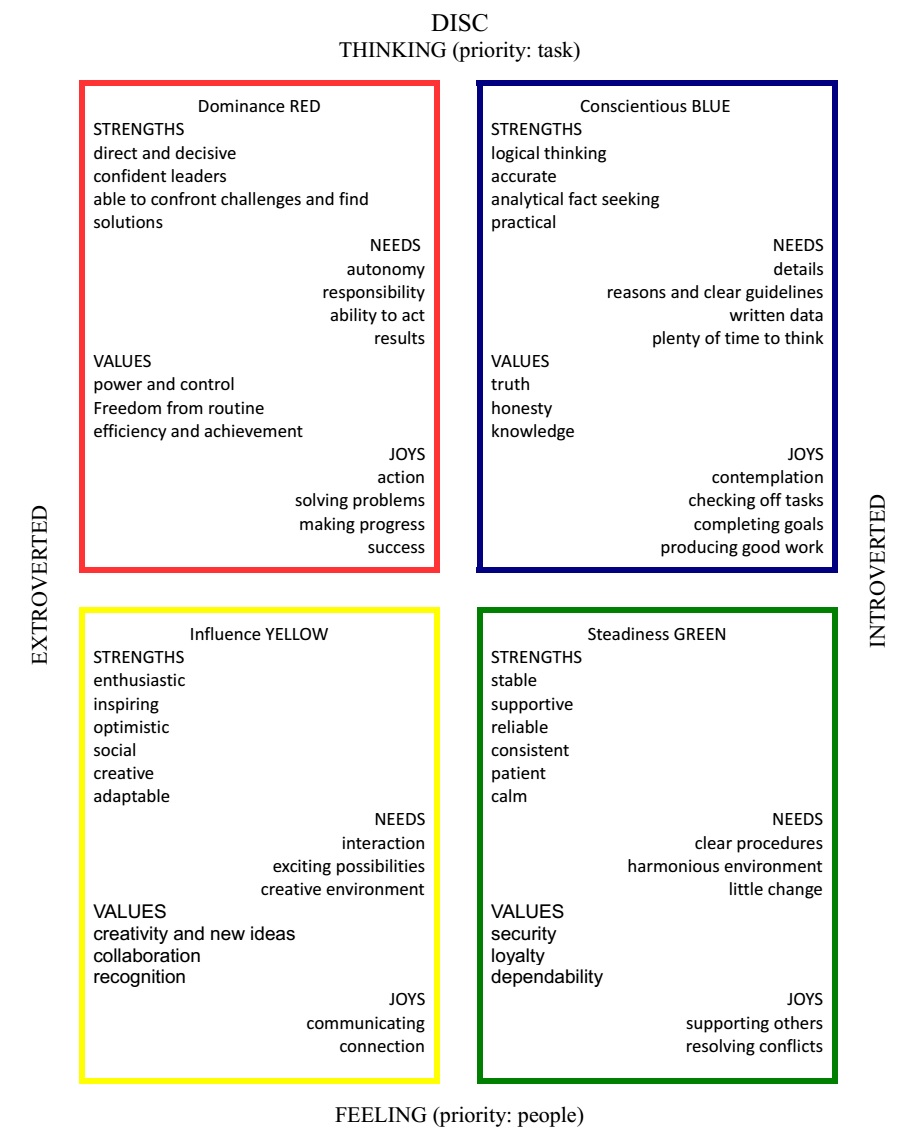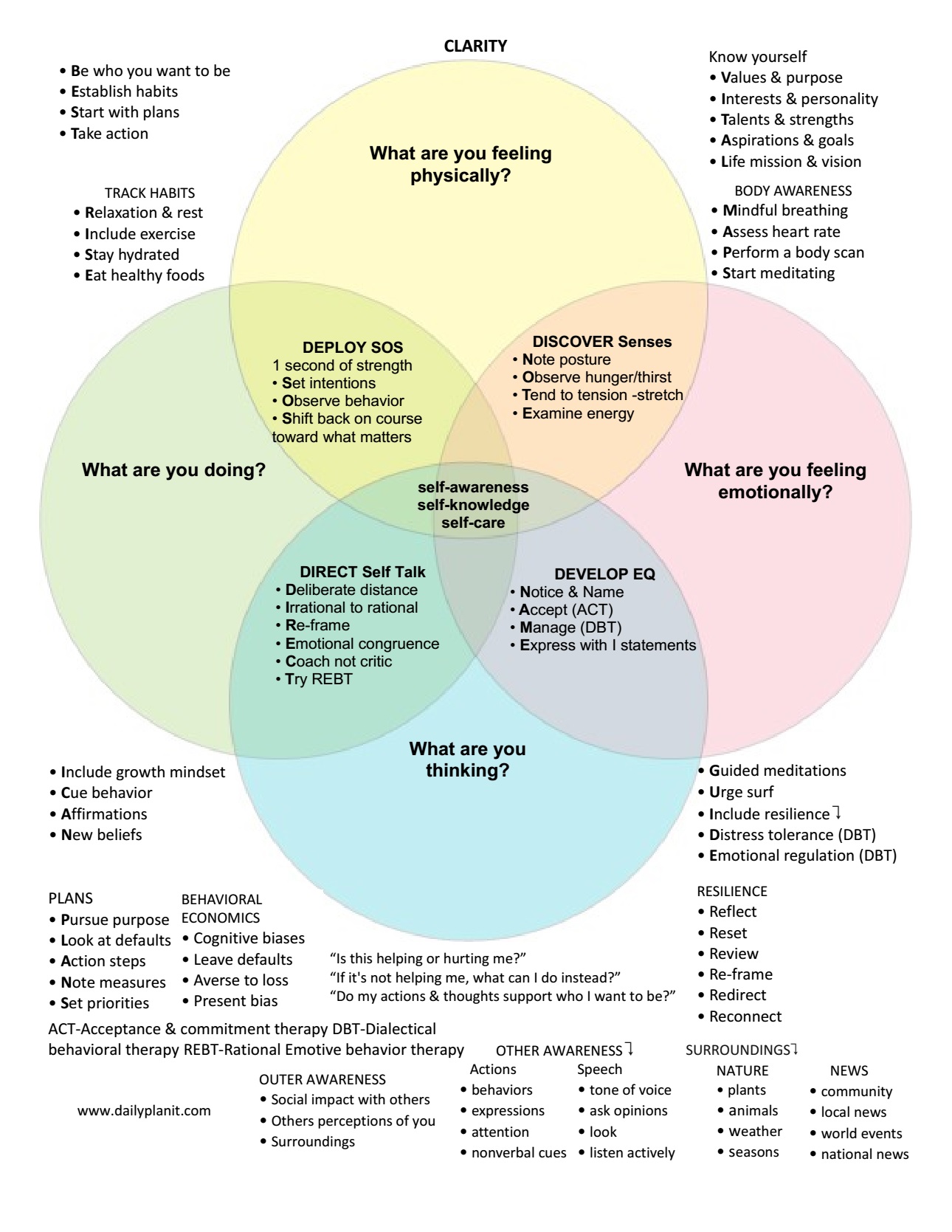When I began to struggle with extra pounds, I had to confront the fact that my fondness for the comfort zone was in direct opposition with achieving weight loss. Despite my best efforts to find shortcuts and avoid the work, it was simply not going to happen without getting up off the couch and doing the work. I watched a TED talk by Oonagh Duncan and read her book “Ditch the Diet.” She is really good at telling it like it is and I appreciated her calling me out, even as I wished she could do it with less colorful language. After reading it, I could no longer fool myself. As with any goal, this was going to take work. Now I know that work is not a four letter word, and I can work hard when I need to. But I’ve always been a lot more inclined to seek the fun stuff and the enjoyments of life.
Get some satisfaction (be willing to work hard for a meaningful goal)
About this time I watched a video of Arthur Brooks talking about what makes us happy. He describes the uniquely human ability to gain satisfaction from a job well done. Satisfaction supports the pillar of work, one of four pillars that sustain happiness. (Faith, family, and friendship are the other pillars.) Arthur Brooks’ happiness formula is: Happiness = Enjoyment + Satisfaction + Meaning. If we want happiness, challenges and effort NEED to be a part of our life. This was a ground shaking revelation for me, since I tended to avoid challenges and effort whenever possible. Honestly, shortcuts can sometimes be great time savers! But a shortcut mindset can create problems.
Agency is the key to action
Not only do I tend to love the comfort zone, I also have difficulty accomplishing all the plans that I make. Because it means really taking action. It’s not enough to just aquire the knowledge of what to do and listen to motivational speeches. I have come to believe that Clarity and Choices are extremely important in living a meaningful and fulfilling life. The most important choice we can make is choosing to actually act to become the person that we want to be.
What is agency? the ability to act independently and intentionally to influence outcomes
• Belief in self
• Independent
• Ability to influence outcomes
• Solution oriented
• to Action
Ways to RAISE agency:
• Reflection – self-awareness
• Autonomy – ability to independently act and influence outcomes
• Intentionality – decide with deliberate and purposeful choices
• Self-efficacy – boost confidence and belief in abilities
• Engagement – be curious, interested, and involved
How can we develop agency? What can we read, watch, and do? The AI overview suggests many things that I have spent a lot of time learning about, so I guess I can be capable of putting forth effort, especially in what interests me. It outlined:
• Reflection, identification of values and strengths, goal setting and planning. Got it!
• Emotional regulation, growth mindset, and learning. Sure thing!
• Self-regulation, self-care, and mindfulness. No problem! But then it got into a little rockier ground for me:
• Taking initiative and ownership, believing in yourself, embracing challenges, and learning from mistakes. Uh oh.
Doing difficult things is RUFF, because we can expect to encounter:
• Risk and discomfort
• Uncertainty and unknown
• Fear and anxiety
• Failure and mistakes
Facing difficult things can trigger fear that can cause us to flee, freeze, or act in unhelpful ways. The human reaction when a percieved threat or danger is enountered is to avoid or attack, run or resist! The fight or flight response of our primitive brain instinctually takes over with increased heart rate and faster breathing. This automatic reaction highjacks the thinking part of the brain, making logical responses difficult. So doing difficult things takes awareness, accurate assessment, belief in the importance of what you are doing, belief in your ability to do it (self-efficacy), the courage to take it on, and the commitment to see it through. This is not easy, but when we do difficult things, we gain:
• Growth
• Resilience
• Adaptability
• Strength
• Satisfaction
Have I done hard things? Oh, yes. Life often brings hard things whether we seek them out or not. And when interested enough, I have voluntarily taken on challenges. But my default position is usually to look for the most efficient and easy path and take that one. The problem with the easy path is that it may not lead to where you want to go. In fact, it probably won’t.
Get RESULTS with agency
• Reflect (but don’t stop there)
• Explore resources
• Seek supportive relationships
• Understand and manage emotions
• Learn and grow
• Take small steps
• Support self-efficacy with strengths

The enemies of agency, and the antidotes.
The opposite of agency is passiveness and inaction. A person who lacks agency AVOIDS.
• Attitude: do you feel helpless to create change? The solution is realistic optimism.
• Victim mentality: do you have a fixed mindset? The solution is a growth mindset.
• Indifference: are you too bored to care? The solution is to find engagement.
• Overwhelm: are there too many choices? The solution is to simplify.
• Distraction: is social media, television, videos, etc. sucking up all of your attention? The solution is to limit inputs.
• Sedentary lifestyle: is much of your day inactive? The solution is to move more.
Agency Blockers from Nick Wignall
SEARCH for agency:
• Seek purposeful actions
• Explore with experimental mindset
• Adopt a growth mindset
• Realistic optimism ↴
• Commitment to difficult tasks
• Hack distractions
How to Identify High Agency People by Nick Wignall, Anne-Laure Le Cunff describes self-authorship and an experimental mindset at Big Think. John Ameachi on commitment at Big Think.
Use realistic optimism to overcome learned helplessness.
Learned helplessness can develop when we face negative situations or events that are outside of our control. We may generalize our inability to influence outcomes, which can result in a sense of powerlessness and a tendency to either not try at all to make changes, or to give up easily, even when the situation is different. Control may now be available to us, but beliefs still hold us back.
The elephant and the rope story describes how limiting beliefs can prevent the realization of true potential. A young elephant that is restrained by a small rope grows up believing it cannot break free, even when the rope is no longer strong enough to hold it. This belief becomes a now self-imposed limit that keeps it from breaking free.
Realistic optimism means that you recognize the things you can change, accept the ones you can’t, and find courage to act on the ones you can. You know what is within your circle of influence, and SHAPE what you can with agency and communication skills.
• Share information
• Help others
• Ask for what you want
• Persuade with appeal
• Express opinions
• Set limits
Recognize when: It’s not personal (is the cause perceived to be internal or external?) It’s not permanent (is it a one-time event or eternal?) It’s not pervasive (is the event a specific situation, or is it global?) [from 3 ways to reverse learned helplessness]
Engagement means that you are curious, interested, and involved. To increase engagement, take a STAND:
• Seek out connections
• Try new things
• Ask questions
• Notice
• Decide to make a difference
BOLDLY EXPLORE to develop agency
• Be curious
• Overcome resistance
• Live at the edge of the comfort zone
• Defeat inertia
“Be Seen” by Jen Gottlieb, TED talk How to overcome self-sabotage, TED talk How to eliminate self-doubt forever by Peter Sage, TED talk The art of discomfort by Leigh Bardugo
Yes, you CAN do hard things
• Involvement
• Courage
• Act even when hard
• Never give up
It takes courage to act with agency.
Books and TED talks
Amazon affiliate links to books provide a small commission to help support the Daily PlanIt.
RESOURCES
Related to agency are being authentic, and the motivational factor of Autonomy.
Explore more TED talks by speakers who are also authors at TED Talk Book Discussion.













